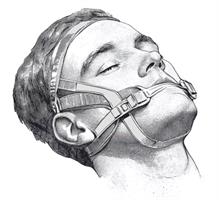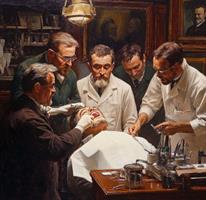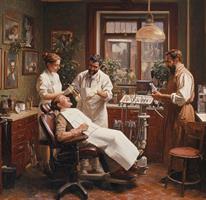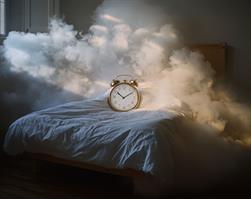Snoring has been a common problem throughout human history, affecting not only the snorer but also their sleeping partners and family members.
While various remedies have been attempted over the years, the development of snoring mouthpieces marks a significant milestone in addressing this widespread issue.
Let's delve into the fascinating history of these innovative devices that have revolutionized sleep quality for millions around the world.
Early Beginnings: The Roots of Oral Appliances
The concept of using oral appliances to address sleep-related breathing issues can be traced back to the early 20th century. While not specifically designed for snoring, these early devices laid the foundation for future developments.
In the 1930s, French stomatologist Pierre Robin developed the "monobloc" device, primarily to treat glossoptosis (tongue obstruction of the airway) in infants. This invention, though not intended for snoring, introduced the idea of using oral appliances to manage airway issues during sleep.
The 1980s: A Decade of Discovery
The 1980s marked a turning point in the history of snoring solutions. As sleep medicine gained recognition as a distinct medical specialty, researchers and clinicians began to explore non-invasive alternatives to treat snoring and sleep apnea. This decade saw increased interest in oral appliances as a potential solution, with dentists and sleep specialists collaborating to develop new approaches.
Dr. Thornton's Breakthrough
A pivotal moment in the history of snoring mouthpieces came in 1990 when Dr. W. Keith Thornton developed one of the first commercially successful anti-snoring devices. This invention later evolved into the Thornton Adjustable Positioner (TAP), which became a benchmark in the field of dental sleep medicine. The TAP device demonstrated the effectiveness of mandibular advancement in reducing snoring and improving sleep quality, paving the way for future innovations.
The Rise of Mandibular Advancement Devices (MADs)
Following Dr. Thornton's breakthrough, the 1990s saw a surge in the development of Mandibular Advancement Devices (MADs). These devices work by holding the lower jaw slightly forward, which helps keep the airway open during sleep. The effectiveness of MADs in treating both snoring and mild to moderate sleep apnea led to their growing popularity among patients and healthcare providers alike.
Boil-and-Bite Revolution
The late 1990s and early 2000s brought about another significant advancement in snoring mouthpiece technology: the introduction of thermoplastic materials. This innovation led to the development of "boil-and-bite" devices, which allowed users to create a custom fit at home.
By simply heating the device in hot water and biting into it, users could mold the mouthpiece to their unique dental structure. This development made snoring mouthpieces more accessible and affordable for the general public.
Tongue Retaining Devices (TRDs)
Alongside MADs, another type of snoring mouthpiece gained traction: Tongue Retaining Devices (TRDs). These devices work by holding the tongue forward, preventing it from falling back and obstructing the airway during sleep.
While less common than MADs, TRDs offer an alternative for those who cannot use mandibular advancement devices due to dental issues or personal preference.
The Era of Customization
As the field of dental sleep medicine advanced, so did the level of customization available in snoring mouthpieces. Dentists began offering custom-made devices tailored to individual patients' needs. These professionally crafted mouthpieces, while more expensive, offered superior comfort and effectiveness compared to over-the-counter options.
Technological Integration
The 21st century has seen the integration of technology into snoring mouthpieces. Some modern devices now incorporate micro-recording devices to track sleep patterns and effectiveness. Others feature adjustable components that can be fine-tuned for optimal performance without requiring a new device.
FDA Recognition and Medical Acceptance
A significant milestone in the history of snoring mouthpieces came in 2005 when the U.S. Food and Drug Administration (FDA) approved the use of certain oral appliances for the treatment of snoring and obstructive sleep apnea. This recognition by the FDA helped legitimize snoring mouthpieces as a valid medical treatment, leading to increased acceptance among healthcare providers and insurance companies.
The Present Landscape
Today, the market for snoring mouthpieces is diverse and sophisticated. Consumers can choose from a wide range of options, from simple over-the-counter devices to advanced, custom-made appliances prescribed by sleep specialists.
The variety of materials, designs, and fitting methods available means that most people can find a solution that works for their specific needs.
Ongoing Research and Future Directions
The field of snoring mouthpieces continues to evolve, with ongoing research focusing on improving comfort, effectiveness, and long-term outcomes. Scientists are exploring new materials that offer better durability and hygiene properties. Additionally, there's growing interest in combining oral appliance therapy with other treatment modalities for more comprehensive sleep solutions.
Conclusion
From their humble beginnings in dental practices to becoming a mainstream solution for snoring and sleep apnea, snoring mouthpieces have come a long way. Their evolution reflects our growing understanding of sleep disorders and the importance of quality sleep for overall health.
As we look to the future, it's clear that these devices will continue to play a crucial role in improving sleep quality and, by extension, the quality of life for millions of people worldwide.
The history of snoring mouthpieces is not just a tale of technological advancement; it's a story of how innovative thinking and interdisciplinary collaboration can address common health issues. As research continues and technology advances, we can expect even more sophisticated and effective solutions to emerge, offering hope to the millions who struggle with snoring and sleep-disordered breathing.





